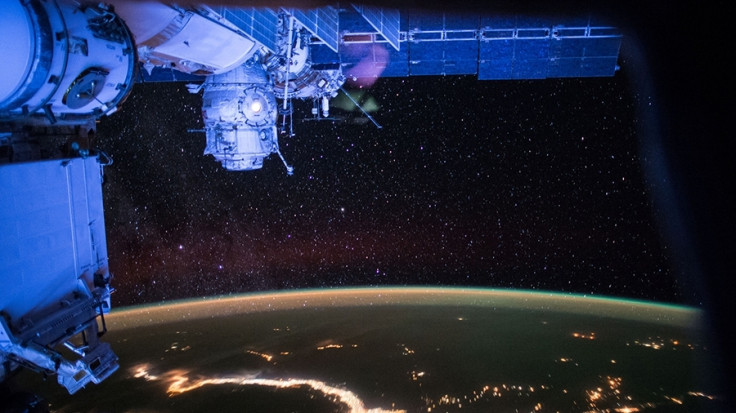Nasa to study 'invisible' orbital space junk with new sensor on ISS
The Space Debris Sensor will study objects that are less than a millimetre in size and cannot be tracked from Earth.

Nasa will begin to study space debris that is too small to be observed from Earth using a new sensor, which will be transported to the International Space Station (ISS) via the upcoming SpaceX launch scheduled on 4 December. Called the Space Debris Sensor (SDS), it will look for and study objects that are dust-sized, including flecks of paint and other splinters that can be quite destructive in orbit.
The US Air Force (USAF) keeps track of objects in orbit that are approximately the size of a baseball and larger, according to a report by Science Mag (SM). Right now, using ground-based radar, the USAF tracks 23,000 such objects so that satellite operators can avoid them.
The SDS is a one square metre sensor that will be attached to the outside of the ISS and has multiple layers of fine, mesh-like material that have thin sensors embedded in them. These sensors will measure the size and impact of debris and its intensity.
When fast-moving debris strikes the fine mesh, they will break a number of wires that correlate with the size of the particle. Layers beneath this will calculate the velocity and trajectory of the debris, while the back plate will measure impact, notes SM.
Using this data, it is possible to not only measure their trajectories in orbit, but to also get a clear idea about the particles' origins. An elliptical orbit means the particle is a meteoroid and a circular orbit points to it being a piece broken from a man-made satellite.
SDS can also measure the density of microdebris population and create a more accurate method to predict objects that are larger than a millimetre, but smaller than 10 cm.
Brian Weeden, director of programme planning for Secure World Foundation, pointed out that a lot less is known about debris that is smaller and cannot really be seen from the Earth. SDS, once installed on the ISS, will study debris smaller than a millimetre.
While that might not seem like much, at high speeds, even the smallest particles can be dangerous. "If a satellite is in orbit for 10 or 15 years, those little abrasions can have an impact by degrading sensors or degrading materials on the satellite," Weeden explained.
Joseph Hamilton, an orbital debris scientist and SDS principal investigator at Johnson Space Center, has been studying space debris and the effect that it has on satellites and spacecrafts in orbit by looking at their windows and other exterior surfaces, including radiators. Tiny pockmarks and abrasions are all that researchers have to help them study and identify the size of the object that is causing the damage. "A detailed ground inspection could estimate what sizes the objects were that impacted it, but there's limited information you can get out of that," says Hamilton.
The SM report further notes that if the SDS sensor is successful, it can also be used to study debris around the Earth at altitudes in the 700 km to 1000 km range. The ISS orbits at 400 km.





















